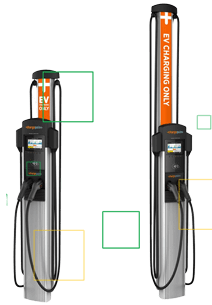Watch Kyle Wiens, CEO of iFixit, discuss his views on repairability during his Build Better session at the bottom of this piece.
Product designers are paying more attention to sustainability
We’ve become a society that no longer has TV or camera repair shops in every town and where “planned obsolescence” is part of the business model. Apple’s first-generation Airpods have irreplaceable, integrated batteries that fail after about 500 recharges or eighteen months. Kyle Wiens of iFixit believes that e-waste shouldn’t be our legacy. How can we build things that last longer? And how can product designers focus on sustainability?
Consumers like sustainability
Designing and building products that can be repaired and last for many years is good business: that’s why leading computer manufacturer HP brags about the repairability of its products in marketing materials. Research presented at the Product Lifetime and the Environment conference (PLATE) indicates that given a choice between an inexpensive product that lasts one or two years and a more expensive, repairable product that lasts closer to five years, customers typically lean toward longer-lasting, more repairable products.
Design for repairability — dollar and cents
Here’s an example of design for repairability: Samsung’s Galaxy Buds give the customer the same net result as other types of earbuds. However, the Galaxy Buds have a serviceable design, with a gasket that pops open to reveal a replaceable, off-the-shelf battery. That’s helpful for consumers because the batteries are possible and easy to replace, saving time and money.
It’s also useful from a manufacturing perspective. Instrumental was set up on an unrepairable earbud line to inspect the dispense of the glue that permanently holds the halves of the earbud together. If the glue had gaps, bubbles, or overflow — the entire earbud would need to be scrapped, as rework was impossible. This was causing significant yield fallout and waste for the program. Instrumental’s job was to correlate the glue’s appearance after dispensing to the downstream air-leak test and cosmetic inspection performance. Once the correlation was made, Instrumental intercepted units with glue that would not result in successful assemblies. Those units could have the glue wiped off and re-dispensed before finalizing the assembly. Instrumental increased the final yield of the line by nearly 12% points by adding this one inspection. While this application of Instrumental made the design viable for mass production, it wouldn’t have been necessary if the design had accommodated a reworkable o-ring seal instead of a permanent glue seal between the two halves of the product.
When you design products that are easy to repair and recycle, you reduce your rework costs (or enable rework in the first place). A few other tips for improving design for repairability: use screws instead of glue, use as few fasteners as possible, using strong connectors (avoiding zifs), and make connections easy to access. Providing clear information to customers also helps: include parts and part numbers, troubleshooting resources, and open-source documentation.
Design for recyclability
Product designers could go even farther by thinking about how to recycle products by designing for recyclability and using recyclable materials. In fact, the Institute of Scrap Recycling Industries has a design for recycling award that Dell has won multiple times.
Learn more about why building products for repairability is good for business from electronics recycling expert Kyle Wiens, CEO of iFixit. Kyle makes the business case for why prioritizing repairability is good for business, and why you shouldn’t wait to incorporate repairability requirements into your designs.
Related Topics



